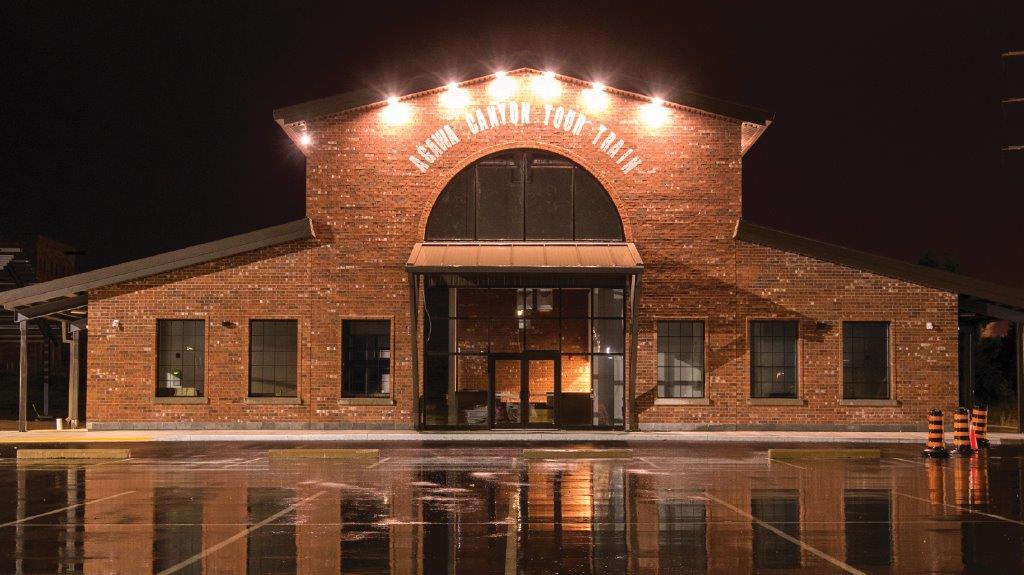
Download a PDF copy of this Case Study
In Northern Ontario, a rail line begins where the waters of Lake Superior mix with those of Lake Huron – and where the upper peninsula of Michigan meets the lands of Canada. From here, at Sault Ste. Marie, the century-old rails travel 184 kilometers over towering trestles, through rugged landscapes and 500 feet down into Agawa Canyon, a shallow, heavily forested canyon. A place with no roads, accessible only on foot or by rail. These immaculate, breathtaking views are the same that inspired Tom Thomson and the Group of Seven to create Canada’s distinct natural fine art.
The Agawa Canyon Train began carrying tourists into Agawa Canyon in the 1960s and peaked at 100,000 visitors from around the world annually in the 1980s. Though the Autumn foliage is a huge draw, rail tourism has declined in recent years, and the full shutdown due to the 2020 COVID-19 pandemic might have been the final nail in the rail’s coffin – if it weren’t for the creativity, innovation, and courage of a few people.
The train tour itself was an unforgettable, once-in-a-lifetime experience. What it needed was a starting point to match.
Tony Porco, owner of the SIS Group – a large, industrial manufacturing company that creates everything from girder beams to locomotive frames – was up to the task. He already owned property in Sault Ste. Marie’s historic downtown Canal District and liked the idea of a train station. Likewise, the Ontario government saw the potential for breathing new life into the line – the largest tourist attraction in Northern Ontario – and included it in a $5 million provincial investment.
The Historic Canal District is spotted with buildings all more than 100 years old, and the property where the new station was to be built was previously the home to the 1899 Sault Ste. Marie Pulp and Paper Company. “It would be out of place if we didn’t make it look like the old building,” explained Tony Porco. A modern-style building would have not only stuck out, but it would also have been disrespectful to the area’s deep history.
But how can a brand-new building fit in with those whose histories date back to the earliest days of Ontario provincehood? Porco was on the lookout for ways to do this, and ended up finding at the unlikeliest of places – Universal Studios. “The Fast and Furious had a building up that looked exactly what we wanted to do,” said Porco. “That looks old. That’s perfect. So, we sourced that brick.”
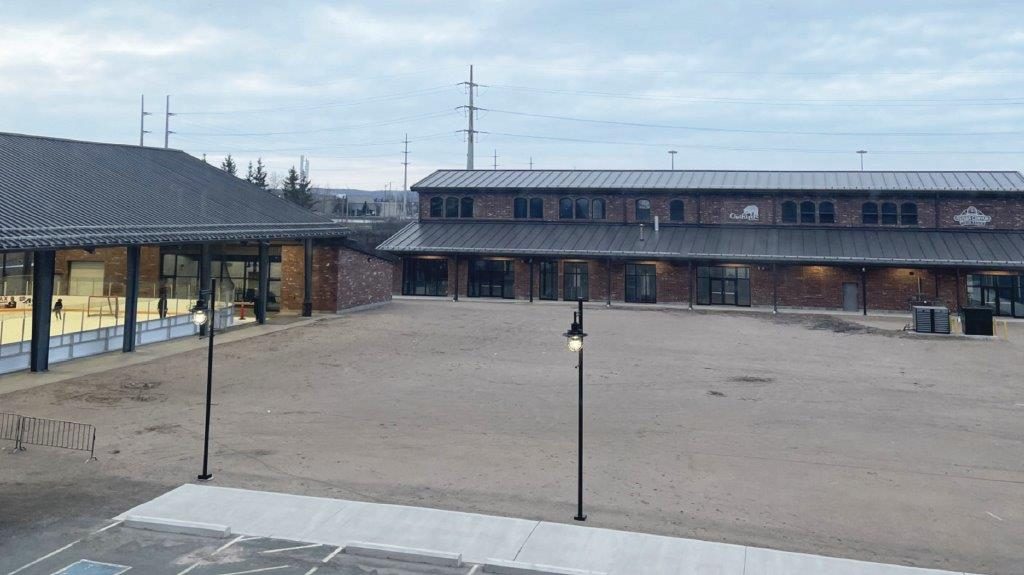
With a brick product he felt confident in, Porco began the design process with MGP Architects. And after 8 years of successful partnership with Robertson Building Systems, he knew he wanted a Robertson frame for the new station – so he met with met with district sales manager John Gelms. “You have two lean-tos and a really skinny building in the middle,” said Porco. “It’s three different buildings, really.” The basic structure wasn’t complicated, but it was certainly new to Gelms. “All we have to do is convince Robertson to join them together,” said Porco. “I sent him the picture, and he says, ‘I can’t build this. I mean, this is like three buildings.’ And I said, ‘Yeah, exactly.’ Then he went quiet for a second. He says, ‘Let me call you back.’”
Gelms remembers it a little differently. “When a customer has a design in mind, he just kicks over some ideas,” he said. “Sometimes it’s a full architectural plan, but in this case there really was no design or architectural drawings that Tony had, other than just a concept.” But that didn’t stop Gelms. As Porco remarked, “He was very open-minded.”
“I looked at it and thought, I can turn this thing into a pre-engineered building,” Gelms said. “I just basically generated some drawings on my software and sent it over to Tony and he got his architect involved at that point.” After some back-and-forth, the design was in place and construction could move forward. “We have the capabilities in order to design this building and fabricate the structure for it as well,” said Gelms, “all the steel columns, the rafters and the bracing for it.” They also had everything needed for the roof secondary structure and roof system.
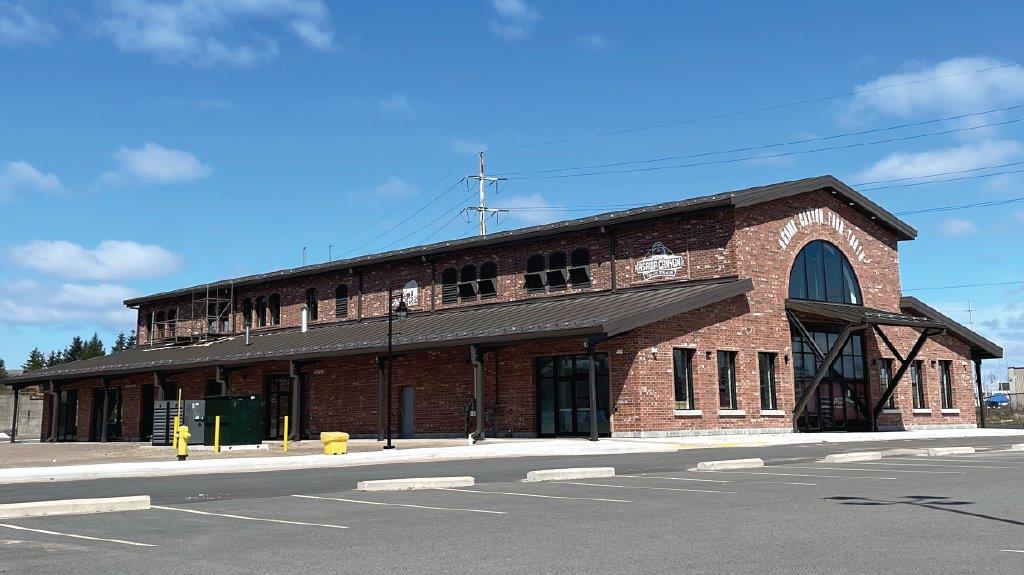
The 30’ high clear span central building would have a double-slope roof with straight columns and 19’ high lean-to-frames on either side of the center building. The entire exterior was to be bricked – except for the arched glazing, which reflected the style of other buildings in the area. “Tony basically steel-studded the frame and bricked the outside,” explained Gelms. “We provided the supports for the bricks as well as the lateral support for the brick itself because brick by itself needs to have a support. Otherwise, it’ll just crack and crumble.”
The roof of all three buildings was clad in a six-inch-thick insulated foam panel. The profile was the CFR insulated metal standing seam roof panel, 36” wide and finished in Burnished Slate. This roof provided a technologically advanced counterpoint to the historical brick lining the perimeter. CFR is an insulated, 24 gauge, standing seam roof panel – the best of both worlds of pre-engineered metal construction. The polyurethane foam core provides superior R-values, while the all-in-one component allows for simple, expedited installation. What’s more, the standing seam joint makes the roof virtually impenetrable – even when put up against severe Northern Ontario winters and buildup of rooftop ice and snow.
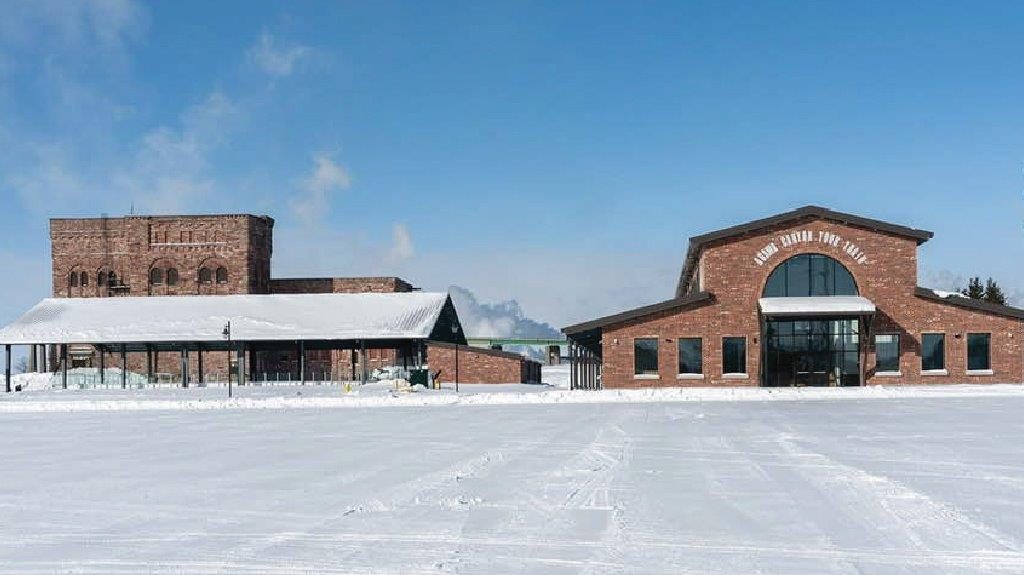
If you’re thinking this is just a train station, think again. While it does house the ticket desk and offices for the train station employees, it’s also much, much more. The nearly seven-acre property features a climbing wall and Outfitters, where guests can rent a tent, canoe or other outdoor gear to take on the train – making a multi-day trip out of the excursion. There’s the Blockhouse Pub, Outspoken Brewery, a Group of Seven theatre experience, and the station also honors the area’s rich native history, with an interactive gallery area featuring indigenous artwork and a teaching lodge built by elders from Batchewana First Nation. Lining the walls and floors are murals, while sitting adjacent to the station is an event center and ice rink.
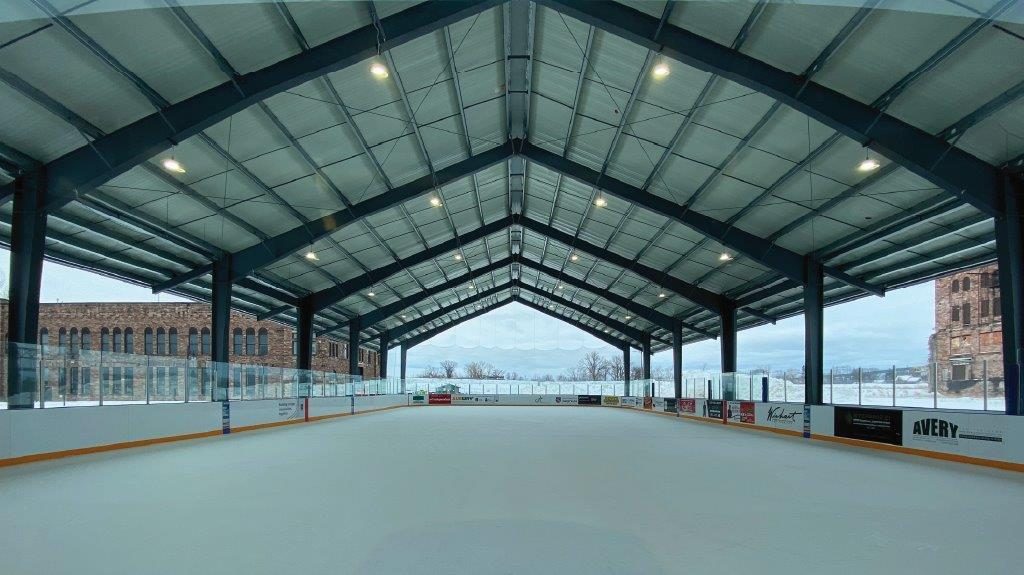
The Agawa Canyon Tour Train reopened in September of 2021, offering a breathtaking, one-day journey with GPS triggered narration in English, French, German, Japanese, Korean and Mandarin, and taking its adventurers deep into the Agawa Canyon – a place reachable only by rail. Once there, they can explore trails leading to waterfalls, canoe, camp, or just relax in the beauty few are lucky enough to experience. With a station experience to match, the project is an unqualified success, and has already completely sold out.
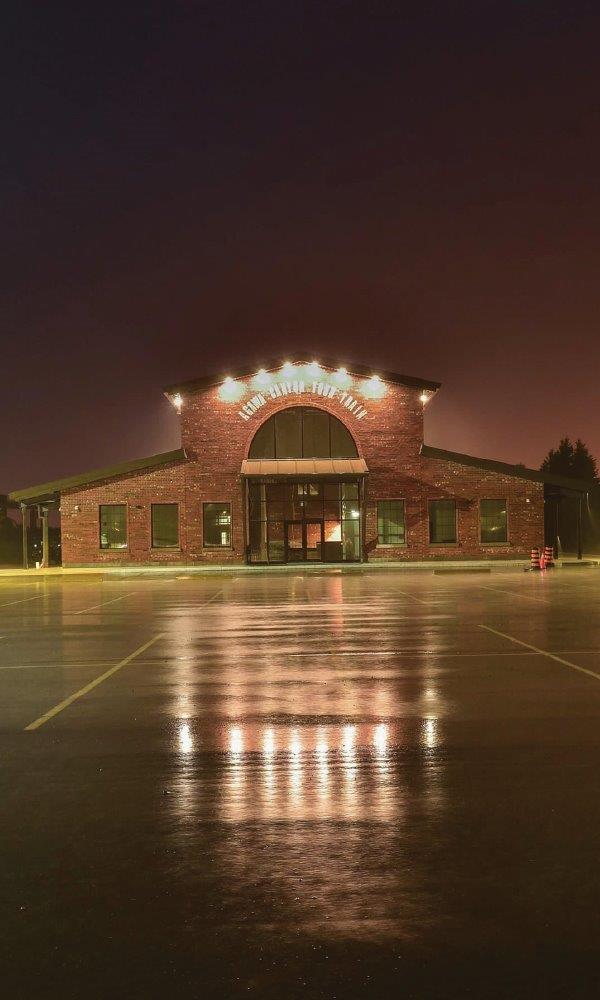
“Long story short, here we are, you’ve got a fantastic looking building,” said Gelms. “To this day, people come in here and think it’s an old, old building,” said Porco. “It feels great that we accomplished what we wanted to do.”
It must also feel great that the Agawa Canyon Train Station won a Robertson Photo Award in the Retail/Restaurant category – as well as the distinguished Building of the Year award. But with its convincing historic appearance, it might leave you wondering, “Which year?”